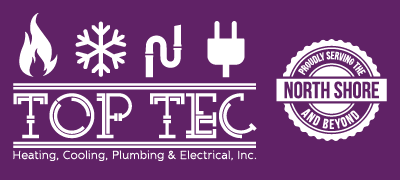
You shouldn’t be forced to sacrifice comfort or drain your wallet to keep your residence at a refreshing setting during muggy weather.
But what is the right temp, exactly? We go over recommendations from energy specialists so you can choose the best temperature for your loved ones.
Here’s what we advise for the most energy-efficient setting for air conditioning in Libertyville.
Recommended Thermostat Settings for Summer
Most people find using the thermostat at 72-73 degrees is ideal. However, if there’s a huge difference between your interior and outdoor temps, your AC expenses will be greater.
These are our recommendations based on the U.S. Department of Energy (DOE) and ENERGY STAR®.
While at home: 78 degrees. While that appears hot, there are ways you can keep your home cool without having the AC on constantly.
Keeping windows and curtains shut during the day keeps cool air where it needs to be—indoors. Some window treatments, such as honeycomb shades or plantation shutters, are designed to deliver more insulation and improved energy conservation.
If you have ceiling fans in your house, the DOE says you can move thermostat temps about 4 degrees higher without compromising comfort. That’s due to the fact they cool by a windchill effect. Since they cool people, not rooms, shut them off when you exit a room.
If 78 degrees still seems too warm on the surface, try conducting an experiment for approximately a week. Start by increasing your thermostat to 78 degrees while you’re at your residence. Then, progressively decrease it while using the advice above. You may be surprised at how cool you feel at a higher temperature setting.
While away: 88 degrees. There’s no reason to keep the AC on all day while your home is empty. Turning the setting 7–10 degrees hotter can save you an estimated 5–15% on your electricity expenses, according to the DOE.
When you get home, don’t be tempted to put your thermostat colder than 78 to cool your house more quickly. This isn’t effective and typically results in a higher cooling bill.
A programmable thermostat is a helpful method to keep your settings in check, but you have to set programs. If you don’t set programs, you run the risk of forgetting to move the set temperature when you go.
If you’re looking for a hassle-free solution, consider getting a smart thermostat. This thermostat connects with your phone, so it knows when you’re at home and when you’re gone. Then it instinctively modifies temperature settings for maximum savings. How much exactly? About $180 annually on heating and cooling, according to ENERGY STAR.
Another advantage of having a smart thermostat? You can use your phone to keep an eye on and adjust temperature settings from just about anywhere.
While sleeping: Around 70 degrees. While ENERGY STAR suggests 82 degrees, that might be too uncomfortable for most families. The majority of people sleep better when their sleeping space is chilled, so that’s why the National Sleep Foundation suggests 60–67 degrees. But that might be too chilly, due to your pajama and blanket preference.
We advise trying a comparable test over a week, putting your temp higher and gradually turning it down to choose the right temperature for your residence. On pleasant nights, you may find keeping windows open at night and relying on a ceiling fan is a superior option than running the air conditioning.
More Approaches to Save Energy This Summer
There are extra methods you can spend less money on utility bills throughout warm weather.
- Get an energy-efficient AC system. Central air conditioners only last about 12–15 years and lose efficiency as they get older. A new air conditioner can keep your home more comfortable while keeping cooling expenses small.
- Book regular air conditioner maintenance. Annual air conditioner maintenance keeps your equipment operating properly and may help it operate more efficiently. It could also help prolong its life span, since it allows technicians to spot seemingly insignificant issues before they lead to a major meltdown.
- Put in new air filters often. Read manufacturer instructions for replacing your air filter. A dirty filter can cause your system to short cycle, or run too often, and raise your cooling.
- Inspect attic insulation levels. Just about 90% of residences in the United States don’t have proper insulation, according to the Insulation Institute. Most southern climates require 13–14” of attic insulation, while northern climates should have 16–18”.
- Have your ductwork checked. Ductwork that has loosened over time can let cold air into your attic, walls or crawl space. This can create major comfort troubles in your house, including hot and cold spots.
- Seal openings, doors and windows. Keep humid air in its place by sealing openings. You can also caulk or weather strip doors to seal more cold air within your home.
Use Less Energy This Summer with TopTec
If you want to use less energy during hot weather, our TopTec specialists can assist you. Get in touch with us at 847-362-0262 or contact us online for more information about our energy-saving cooling options.
